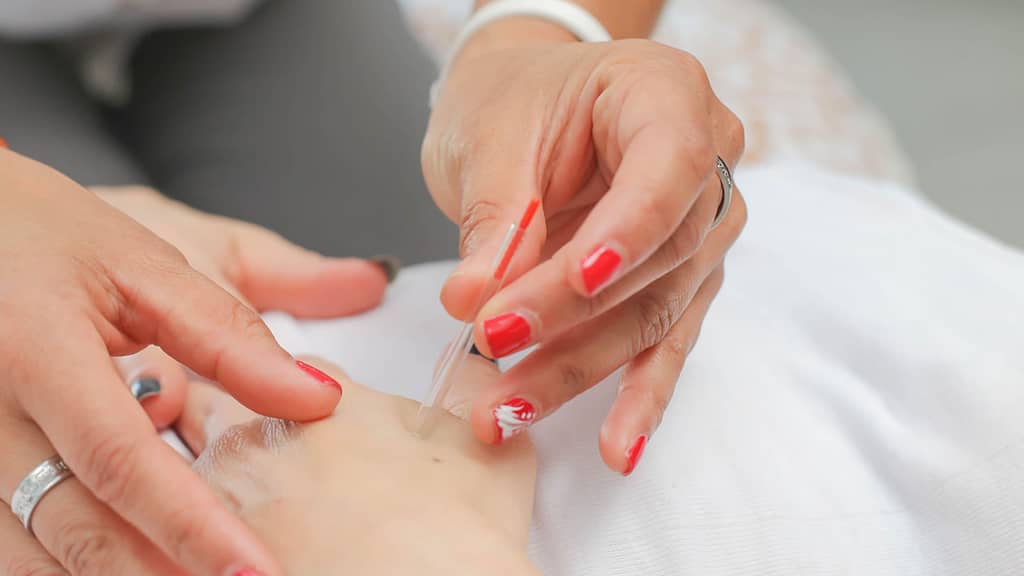Acupuncture for Fibromyalgia? Here is how it works
Fibromyalgia is a chronic pain disorder that affects millions of people worldwide. It is characterized by widespread pain, fatigue, and sleep disturbances. Let’s take a closer look at fibromyalgia.
The Western Medicine Point of View
According to Western medicine, fibromyalgia is a complex disorder that is not well understood. It is believed to be related to abnormal pain processing in the central nervous system. The disorder is diagnosed based on symptoms such as widespread pain, tenderness, and fatigue. However, there is no specific test or imaging study that can confirm the diagnosis.
Fibromyalgia can be a challenging condition to manage, and treatment options vary depending on the individual. Some of the most common treatment options for fibromyalgia include medications such as pain relievers, antidepressants, and muscle relaxants, as well as lifestyle changes such as exercise, stress reduction, and adequate sleep. Physical therapy and counseling may also be helpful for some individuals.
Causes and Treatment Options
In Western medicine, the causes of fibromyalgia are not well understood, but it is believed to be related to a combination of factors. These may include genetics, infections, physical or emotional trauma, and other medical conditions. Treatment options for fibromyalgia may include medications such as pain relievers, antidepressants, and muscle relaxants. Lifestyle changes such as exercise, stress reduction, and adequate sleep may also be effective in managing symptoms. Other therapies, such as cognitive behavioral therapy and acupuncture, may also be helpful for some individuals.
TCM’s View of Fibromyalgia
In Traditional Chinese Medicine (TCM), fibromyalgia is considered a disorder of Qi (energy) and blood stagnation. TCM views fibromyalgia as a blockage of energy flow in the body, which leads to pain and other symptoms. Fibromyalgia is also believed to be a disorder of the liver, spleen, and kidney meridians in TCM. The goal of TCM treatment for fibromyalgia is to promote the flow of Qi and blood, restore balance to the body, and alleviate symptoms.
TCM and Acupuncture Treatment Options
TCM treatment for fibromyalgia typically involves acupuncture, herbal medicine, and lifestyle changes. Acupuncture is believed to stimulate the flow of Qi and blood, promoting healing and reducing pain. Herbal medicine is used to nourish the Qi and blood, support organ function, and alleviate symptoms such as fatigue and insomnia. Lifestyle changes may include dietary modifications, exercise, and stress reduction techniques. Acupuncture and herbal medicine can be used alone or in combination to manage symptoms.
Common Acupuncture Points
- Baihui (GV 20): Located at the top of the head, this point is believed to promote mental clarity and relieve headaches.
- Fengchi (GB 20): Located at the base of the skull, this point is believed to relieve neck and shoulder pain and improve circulation.
- Jianjing (GB 21): Located at the top of the shoulder, this point is believed to relieve shoulder tension and improve blood flow.
- Hegu (LI 4): Located on the hand, between the thumb and index finger, this point is believed to relieve pain and promote relaxation.
- Taichong (LV 3): Located on the top of the foot, between the first and second toes, this point is believed to promote liver function and relieve stress.
- Zusanli (ST 36): Located on the lower leg, about four finger widths below the kneecap, this point is believed to promote overall health and relieve fatigue.
- Sanyinjiao (SP 6): Located on the inside of the lower leg, about four finger widths above the ankle, this point is believed to promote spleen function and relieve pain and fatigue.
The specific points used clinically may vary depending on the individual’s symptoms and overall health.
Common Chinese Herbs
- Dang Gui (Angelica sinensis): This herb is believed to nourish the blood and promote circulation. It may be used to relieve pain and muscle stiffness associated with fibromyalgia.
- Bai Shao (Paeonia lactiflora): This herb is believed to calm the liver and nourish the blood. It may be used to relieve muscle tension and reduce stress and anxiety.
- Chuan Xiong (Ligusticum chuanxiong): This herb is believed to promote blood circulation and relieve pain. It may be used to relieve headaches and muscle tension associated with fibromyalgia.
- Huang Qi (Astragalus membranaceus): This herb is believed to tonify the Qi and promote immune function. It may be used to alleviate fatigue and improve overall energy levels.
- Gan Cao (Glycyrrhiza uralensis): This herb is believed to harmonize other herbs in a formula and relieve pain. It may be used to relieve muscle tension and reduce inflammation associated with fibromyalgia.
- Fu Ling (Poria cocos): This herb is believed to drain dampness and promote urination. It may be used to alleviate swelling and promote kidney function.
- Rou Gui (Cinnamomum cassia): This herb is believed to promote circulation and relieve pain. It may be used to relieve muscle tension and reduce inflammation associated with fibromyalgia.
Again, the specific herbs used clinically may vary depending on the individual’s symptoms and overall health. It’s important to consult with a qualified TCM practitioner for a personalized treatment plan.
Science Behind TCM and Acupuncture Treatment for Fibromyalgia
Research suggests that acupuncture may be an effective treatment for fibromyalgia. Studies have found that acupuncture can reduce pain and improve quality of life in fibromyalgia patients. Acupuncture is believed to work by stimulating the release of endorphins, which are natural pain-relieving chemicals in the body. Herbal medicine may also be effective in treating fibromyalgia, but more research is needed to confirm its efficacy.
Overall, acupuncture and TCM treatment for fibromyalgia is a holistic approach that aims to promote healing and improve quality of life. The combination of acupuncture, herbal medicine, and lifestyle modifications can help manage fibromyalgia symptoms and improve overall well-being.





